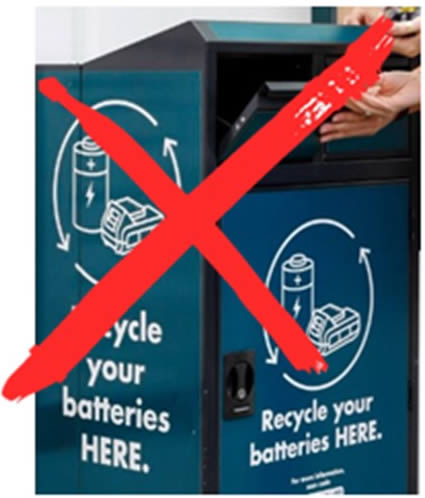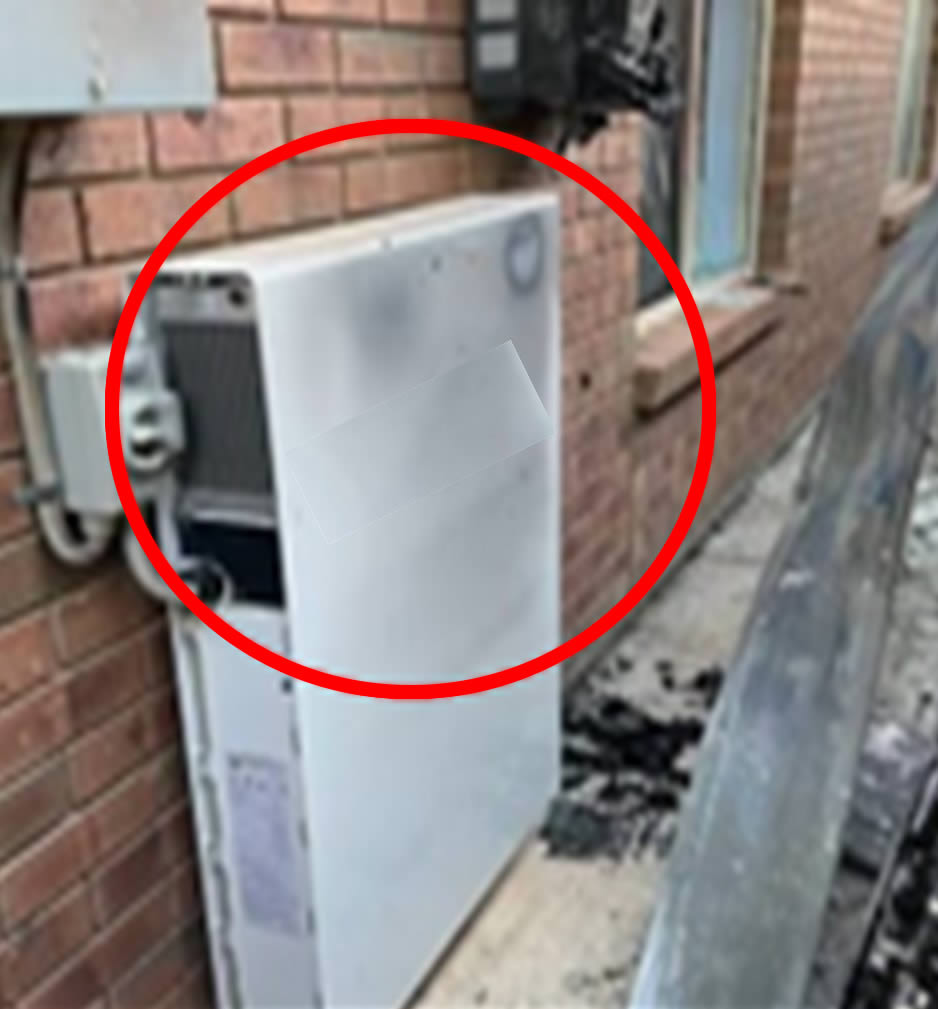Batteries that show any signs of damage should be disposed of carefully as they carry the risk of becoming involved in a fire. Never throw them in your regular waste or recycling collection bins. Fires are known to occur in garbage trucks and waste facilities due to improper disposal of batteries.

Damaged batteries and battery-powered devices include:
- Batteries and/or devices that have been involved in or exposed to fire
- Overheated batteries that may have been emitting vapours or smoke
- Batteries that show signs of swelling or bulging, leaking, cracks, dents, punctures, or crushing
- Batteries that have had water or liquid ingress or have been submerged in water.
Note that some batteries may contain toxic chemicals, heavy metals and other environmental pollutants that can contaminate water supplies and ecosystems when they are incorrectly disposed of.
DOs
- Be aware of the risks related to damaged batteries, including electric shock, secondary fire risks, and exposure to toxic, corrosive, and flammable vapours and substances
- Wear personal protective clothing and equipment when handling damaged batteries or devices
- Fire- or smoke-damaged batteries should be kept outside in a well-ventilated area. Store at least 3 metres from any structures and/or combustible materials. Small batteries or devices can be placed in a container of water to cool and prevent further ignitions.
Note: It is the responsibility of the site owner or occupier to dispose of fire-affected batteries or battery-powered devices safely once NTFRS has attended an incident and handed over the site. - Small batteries that have had water or liquid ingress or have been submerged in water should be removed from any device or appliance. Dry and wipe down terminals to prevent corrosion and short circuiting.
- Place leaking or damaged Batteries in a clear plastic bag or container and store them away from any other combustible materials. For further resources, visit NTEPA and Australia’s official battery stewardship scheme - B-cycle (bcycle.com.au).
DON’Ts
- Never use or charge a damaged battery
- Never dispose of damaged batteries in regular household waste or recycling bins
- Never take damaged batteries to battery recycling collection points or sites

Damaged residential battery energy storage systems (BESS)
A residential BESS that has been damaged by impact, fire, or water ingress must not be put back into operation, even if it appears to be operational.
Always assume that the equipment is energised.
If it is safe to do so:
- Follow any shutdown procedures displayed. This may be on or near the switchboard or adjacent to the BESS.
- If the shutdown procedure cannot be found, identify the main power switch for the BESS and switch to OFF.
Contact the manufacturer and/or an authorised technician to inspect, disconnect and remove the equipment if it has been compromised.
Damaged BESS should be moved to an outside, well-ventilated area. Store at least 3 metres from any structures and/or combustible materials. Seek the manufacturer’s advice on disposal.

Damaged electric vehicles (EVs)
An electric vehicle that has been involved in a collision, a fire, or has been submerged, must be treated with caution as the high voltage battery pack may be compromised. Damaged EV batteries may ignite hours, days, or even weeks after the initial incident.
Contact the sales point, service point or vehicle manufacturer for advice.
Do not charge or use the vehicle unless it has been inspected and cleared by a qualified technician.
Damaged EVs should be kept in an open area at least 15 metres from other vehicles, buildings, and/or other exposures.

